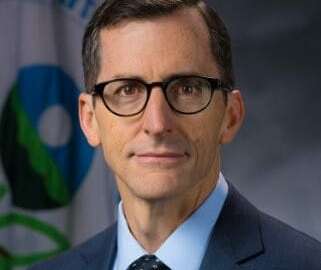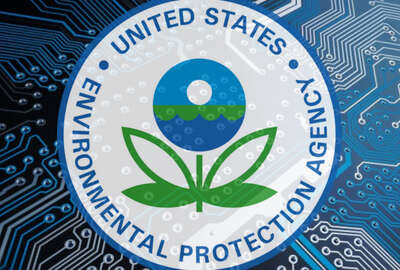
EPA pulls 20 years of environmental, economic data into ‘sector snapshots’
The Environmental Protection Agency has launched a new online dashboard, taking a new approach to how the agency presents government data on the environmental and...
The Environmental Protection Agency has launched a new online dashboard, taking a different approach to how the agency presents government data on the environmental and economic performance of industrial sectors.
The agency’s Smart Sectors program launched its “sector snapshots” application Thursday, which tracks industry’s output of air emissions and greenhouse gasses, as well as its energy use, over the past 20 years.
The “sector snapshots” web app will release 13 industry snapshots on a rolling basis. On Thursday, it released the first three — iron and steel, chemical manufacturing, and utilities and power generation. It expects to release more snapshots next December or January.
“The most important thing about this web application is that it does something that we don’t think has ever been done before, which is to bring together environmental media on a sector basis, all in one spot with roughly 20 years of historical data,” Robert Sachs, an environmental scientist with EPA’s Smart Sectors program, told reporters at a press briefing at the agency’s headquarters.
The sector snapshots pull environmental data from across the government — including the Census Bureau, the U.S. Geological Survey, and Bureau of Labor Statistics.
“Different data is coming from different government sources. Some of it might be on [the Energy Department], and then you have to go to DoE and then combine it with something from EPA. So this is kind of pulling all of the government sources,” said Elizabeth Corona, another member of the Smart Sectors program. “By making this data that’s already publicly available easily accessible, we’re able to look at both environmental and economic performance of each sector for many years.”
The EPA used to publish this industry data in annual “Smart Sectors” written reports, but Daisey Letendre, senior adviser for policy and strategic communications for the Office of Policy, said the new app gives users an at-a-glance look at the environmental data trends.
“We walked Administrator [Andrew] Wheeler through this, and I think that’s one of the most compelling things he saw, is that it’s not just the air trends for across the country, but it’s per each sector, and it’s every source of data that we have.”
Sachs said the 20-year view of data allows users to make better sense of the trend lines, compared to the paper reports.
“Those reports were really single data points,” he said. “There was very, very little historical data, and so that’s probably the biggest change, that instead of just 2014, which is, for instance, what the old reports would have, is we’ve got 20 years of data. So you really are able to see the trends.”
Across the board, the first three snapshots show that industry has made significant progress on most of the environmental benchmarks.
“For these three sectors, for nearly every environmental indicator, I didn’t think everything would be going down as much as it does over 20 years,” Sachs said. “In this instance, luckily, most of the trend lines go down, but we haven’t seen the next three snapshots come out.”
In 2002, under the George W. Bush administration, the agency launched its sector strategies program, which Corona described as an “outgrowth” of former President Bill Clinton’s Reinventing Government Initiative.
However, the Obama administration halted the program in 2009, and was brought last year under the Trump administration.
“We used Smart Strategies as our jumping-off point when we were launching Smart Sectors,” Letendre said. “We saw value in the report, and I think at the time, industry also found value in both the sector strategies program and the report that followed, but nobody reads reports anymore. It’s hard to find any information of use, and so this is a way to portray similar information in a different way that’s more accessible.”
The Smart Sectors team can load new data into the sector snapshots app as they get it — like the greenhouse gas inventory, which gets updated every two years.
“As we get the next batch of information, we’ll put that in,” Letendre said.
In addition to working with a handful of agencies to pull together the data, the Smart Sectors teams also collaborated with about 25 trade groups representing the industry sectors.
“In the development of these sector snapshots, we communicated what the process was with the trade associations so that there’d be no surprises,” Letendre said.
Sachs said the new app, by comparing environmental and economic trends, could pave the way to future policy discussions.
“When you take a sector-based view, regulations and the regulatory framework stack up differently depending on which sector you are. If you’re water, and you’re land and you’re air, what the comprehensive, overall view of the regulations look like to you is not the same. One of our core values and core goals is to take a look at that and see where the opportunities are,” he said. “Is there some kind of policy, is there guidance, is there implementation in the Smart Sectors Program that we can focus on that will unlock better and faster environmental improvement?”
Letendre said that the app is meant to be used as a data resource, and wouldn’t play a major role in the Trump administration’s campaign to cut outdated federal regulations.
“First and foremost, this is meant to be a resource both internally and externally, to anyone who’s interested,” she said. “I don’t foresee us using this as reasoning for any sort of regulatory relief that would be outside of the EPA’s normal processes,
“It could be a data point to provide a general view, but there’s no intent to use it for regulatory development,” Sachs added.
Copyright © 2025 Federal News Network. All rights reserved. This website is not intended for users located within the European Economic Area.
Jory Heckman is a reporter at Federal News Network covering U.S. Postal Service, IRS, big data and technology issues.
Follow @jheckmanWFED





